Proving Putin wrong
The Russian leader’s claim Ukrainian identity is a fraud is disproved on the ground. Is he right about the West?
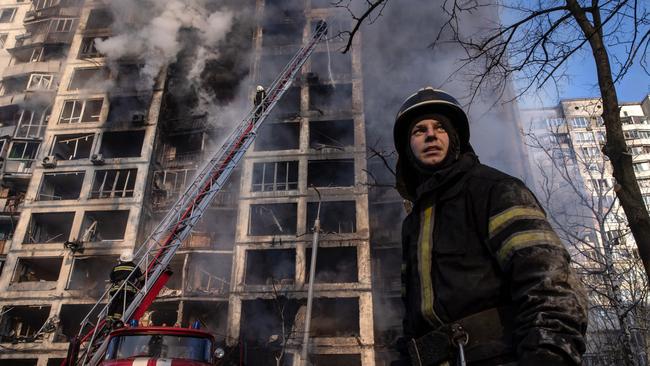
War is the great transformer. Everything has changed in Ukraine. I last visited Lviv in 2015. I remembered the city as a charming, slightly run-down place: Austro-Hungarian architecture, cobbled streets and red-tiled roofs. Friendly, quaint. Full of potential in the right hands, people would say.
Now this west Ukrainian city has become the epicentre for the largest movement of people seen in Europe since 1945.
More than 1.4 million Ukrainians have made their way to Poland since February 24, the day the Russian invasion of Ukraine began. Most of these people have passed through Lviv.
Traffic moves at a snail’s pace through the packed city. At the main station, a teeming throng of refugees from all over Ukraine seeks to board the evacuation trains to Przemysl.
The war, for the most part, remains far to the east. But it is getting closer. There have been missile strikes on the neighbouring cities of Lutsk and Ivano-Frankivsk, and most recently in Lviv province itself, where a Russian attack took 35 lives last week.
The atmosphere among the crowds of refugees at the station is nevertheless calm and ordered. There is no shoving or pushing, no shouting. The refugee crowd consists overwhelmingly of women, children and elderly people. Men under 60 are forbidden from leaving the country. The fathers and sons are back in the east, many of them mobilised in the framework of the army or the Territorial Defence Forces.
I am travelling in the other direction from the refugees, across from Poland and heading eastwards, with the intention of reaching the capital, Kyiv. There are reports it may be encircled soon. The Russians are seeking to advance from the northwest and from the east. Only the southerly route remains open.
In one of the small and unexpected victories Ukraine has achieved during the past two weeks, transport to and from the besieged capital has been maintained. These trains, of old, Soviet vintage, operate according to no regular timetable. The journeys are affected by frequent changes of route because of Russian bombings. The windows are blacked out, in a forlorn attempt to guard against aerial attack.
But the rail service, crucially, like the Ukrainian state as a whole, has not collapsed. Contrary to many expectations, not least apparently those of the Russian leadership, Ukrainian state structures have proven to possess a hardy durability.
This unexpected resilience of structures and institutions itself derives from an additional factorthat Russian President Vladimir Putin apparently failed to predict – namely, the vigour of Ukrainian national identity itself and the willingness of Ukrainians to sacrifice themselves in its defence.
The question of Ukrainian nationhood is the central point at issue in this conflict. Putin, in a long essay published in July last year entitled On the Historical Unity of Russia and Ukraine, expounded the thesis that underlies his invasion. According to the Russian leader, Ukrainian national identity is a fraud, a product of Western geopolitical scheming intended to weaken Russia and encroach on its borders. The Ukrainians, in this view, are wayward siblings of the Russian nation who must be brought back, by force if necessary, to their true loyalties and affiliations.
The invasion, behind the bizarre talk of “denazifying” and “demilitarising” Ukraine, is an attempt to advance this thesis by force.
My own motives for coming to Ukraine at this time are a combination of the professional and the personal. I have been following the Ukraine story since 2014, when I reported on the independence protests at the Maidan Nezalezhnosti. I have reported also from the front lines in the Donbas region.
It is now in retrospect possible to see that what we witnessed among the few hundred protesters on frozen Independence Square in 2013-14 was history in the making. It was the first move in a process that now has precipitated the return of conventional warfare to Europe.
There is a more personal side, too, and here one must tread carefully. I am, from a certain but complex and problematic point of view, of Ukrainian ancestry. My maternal ancestors were among those Jewish subjects of the Russian Empire who left its Ukrainian dominions for the West in the early 20th century.
Any claiming of connections from this feels immediately forced, inauthentic. The Jews of this area at that time did not feel Ukrainian in any sense. They did not speak the Ukrainian language.

The area is remembered, if it is remembered at all, as a place of oppression and suffering. Ukrainian national identity, if it is considered at all, traditionally is seen as something hostile.
This is the reason many, especially older Jewish people, find it difficult even now, even when beleaguered Ukraine is led by a Jewish president, to feel unencumbered sympathy and solidarity with Kyiv. Memories are entangled. There is much that cannot be reconciled. Nevertheless, I want to be here.
The train east to Kyiv was nearly empty. I shared my compartment with an Orthodox priest who was making his way back to his congregants in the beleaguered city. Rostislav, 37, a native of Lviv, had spent the previous two days settling his wife and two sons in with his parents in the safer western city.
On the near empty platform for the Kyiv train, we had watched as the yellow-jacketed volunteers handed out plastic cups of tea to the refugees on the opposite side waiting for the evacuation trains to Poland. I had remarked on the good order and cheerful demeanour of the crowds. “I’m proud of my people,” the priest had told me.
Inside Kyiv
We reached Kyiv by the morning, the city like a lunar landscape as we made our way from the station.
In the half-hour walk from the station to my hotel off the main thoroughfare of Kreschatyk, we saw two people.
A middle-aged man asked us if we knew of any food shops that were open. An old woman wanted to know if we were aware of a pharmacy in the local area.
I had been in Kyiv in September last year. I remembered the crowds on Kreschatyk in the late autumn evening. The couples walking in verdant and peaceful Mariinsky Park. What was to come was entirely unimaginable. And now – apartment blocks with every curtain drawn and no lights. Air-raid sirens piercing the air every few hours. Speeding military vehicles and uniformed men. Everything changed. War.
The auxiliaries of the Territorial Defence Forces are at work fortifying every street in the city for the battle that may be to come.
The Russians are less than 20km from the city centre, at their farthest point of advance. Chechen mercenaries have arrived in the vicinity of Kyiv.
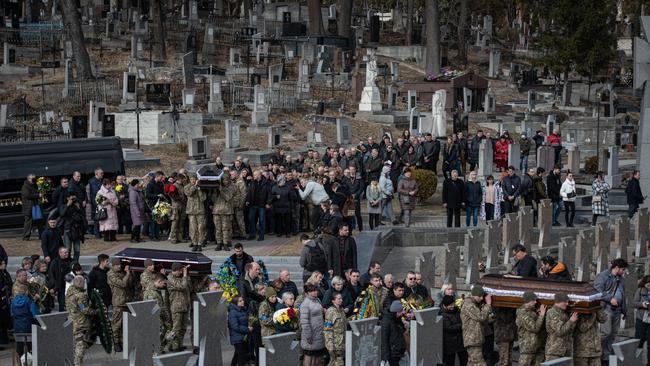
Antitank barricades, or hedgehogs, made from carved-up rail tracks are strewn across the main crossing points. They are at the Maidan too. Teams of civilians, wearing the yellow armbands of the Territorial Defence, can be seen filling sandbags. The sandbags are then used by the volunteers to build firing positions. One may assume that similar positions are being constructed inside the empty apartment blocks.
This is a city preparing for a fight for its survival. Those who have remained are a mobilised population. Ukrainians know their capital is the focal point of the offensive, the place in which the war will be won or lost by Russia. There are constant rumours of imminent assault.
Moscow’s resources are not infinite. One of the most insightful analysts of Russian military capacity, Michael Kofman of the Centre for Naval Analyses, estimated last week that Putin has perhaps three weeks until large parts of the force he has sent become no longer operable.
This means the Russian leader must increase the tempo and intensity of the attack in the days ahead or face the prospect of the eclipse of his aims.
The latest movements around the capital suggest Kyiv may be the area chosen for an upcoming attempt by Putin to change emphatically the dynamic of his stalled offensive.
The 64km-long Russian convoy that has been making its way from Belarus since February 24 has begun to disperse around the city. Howitzers are being deployed in firing positions. Armoured units are deploying in starting points north of the capital, at Antonov airport and other locations.
At an improvised casualty clearing station prepared by the volunteers in Kyiv, the atmosphere was primed and poised.
Crossing the courtyard of the abandoned private hospital where the volunteers have established themselves, I observed fighters taking part in a lesson in the use of quadcopters. These cheap, small, commercially available drones were first used in large numbers in the insurgent battles of the Middle East during the past decade. They will prove a vital element in any battle for Kyiv’s streets.
“Our function here will be evacuation from the battlefield, first medical aid and stabilisation, and then evacuation to the hospital,” 34-year-old Taras Topolia, a paramedic at the facility, tells me. “We are waiting and preparing.”
They have already suffered their first casualties. On February 27 the building was struck by a Russian missile. One killed, one badly injured.
In civilian life, Topolia is a famous singer in Ukraine. His band Antityla (Antibodies) deals in the emotional, Slavic folk-tinged pop rock that is part of the aural landscape here. “Putin has made everything clear,” he says. “Everyone has seen it. Putin is the devil. We have one enemy. A lot of people in Ukraine didn’t understand before. Putin is our enemy. Two or three days of the invasion and now everyone understands it. Every bomb he drops makes everyone understand. So now there’s a total support of the Ukrainian army and of our resistance. No ‘variants’, and everyone doing what they can.”
There is an alert as we are speaking. An unidentified helicopter has been sighted above the area. Rapidly, we are escorted to our car as the position prepares for a possible attack
I left Kyiv after four days, joining the flow of refugees on the evacuation trains, first back to Lviv, then on from there across the Polish border to Przemysl.
On the 36-hour train journey from the capital to Poland, I met Tatiana, from the town of Bucha just outside Kyiv. Until last week she was an IT worker. Now she is a refugee. Her husband has rejoined the regular army and is deployed outside the capital. Their apartment was destroyed by a direct hit from a missile.
“And it was just after we had finished really getting it ready, just as we’d wanted it,” she says, with a smile that’s half regretful, half an ironic acknowledgment of the insanity of the situation. We are standing in open ground by our train, which has made a stop before the border. Snow is falling.
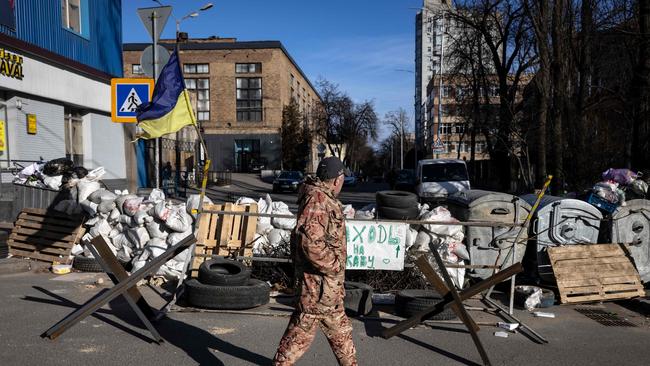
The road ahead
These people won’t be beaten, it occurs to me. Whatever the immediate tactical outcome of the fighting in the days ahead, they have already won. The thesis that Putin wanted to test, concerning the supposed feebleness and artificiality of Ukrainian nationhood, has been conclusively disproved.
But of course Putin’s thesis is not concerned with Ukraine alone. At the Maidan in 2014, at the start of all this, I remember seeing US and EU flags raised, without irony and in deadly earnest.
The Ukrainian desire to draw close to the free life available in the West is also part of what the Russian dictator is trying to snuff out. Alongside his now disproved notion of Ukraine as brittle and breakable, Putin perceives the Western world as rudderless, disunited, incapable of rising to the defence of its allies – an “empire of lies”, as he referred to it on February 28.
This part of his thesis awaits decisive refutation. The stakes are high. Fears are growing that, frustrated by his army’s failure, Putin could order the use of chemical weapons in Ukraine in the next period.
Putin’s assault on Ukraine is an attack on the global order that has existed since 1991. His victory or defeat will determine the future shape and balance of global affairs.
Jonathan Spyer is director of the Middle East Centre for Reporting and Analysis. He is the author of Days of the Fall: A Reporter’s Journey in the Syria and Iraq Wars.

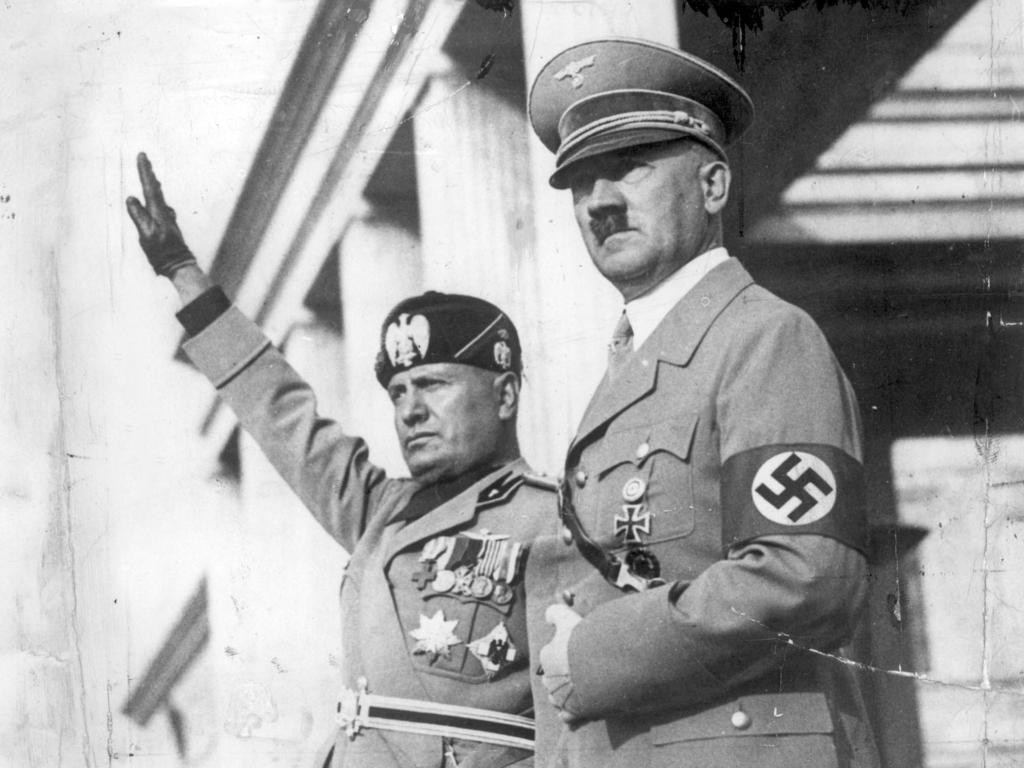
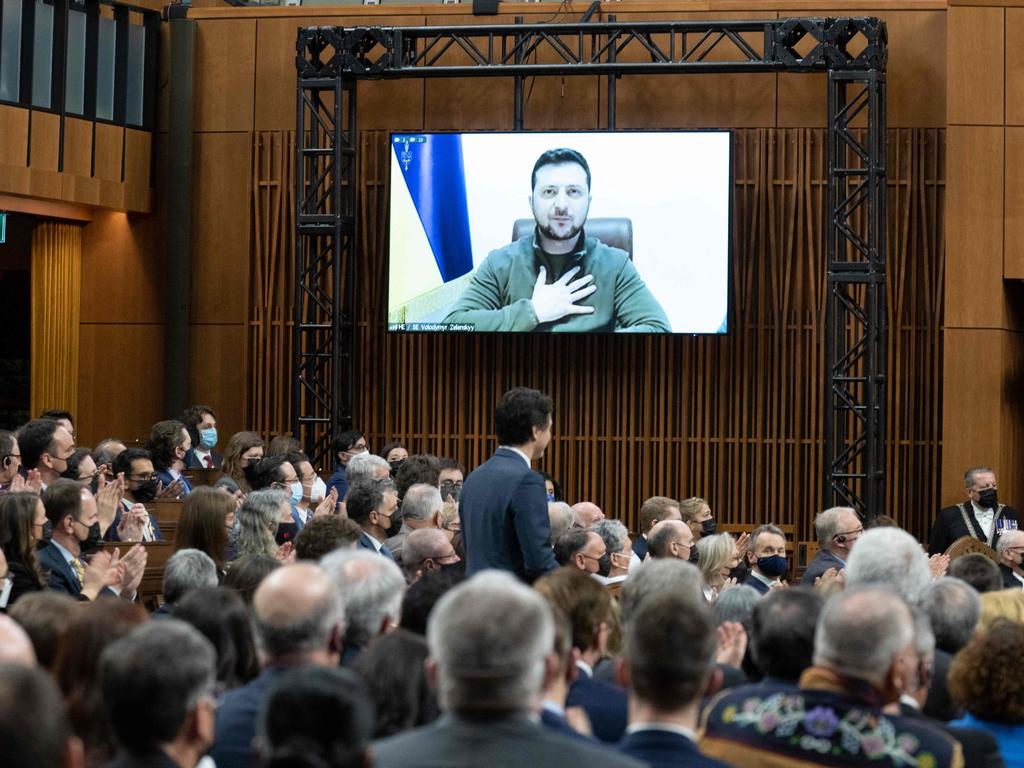
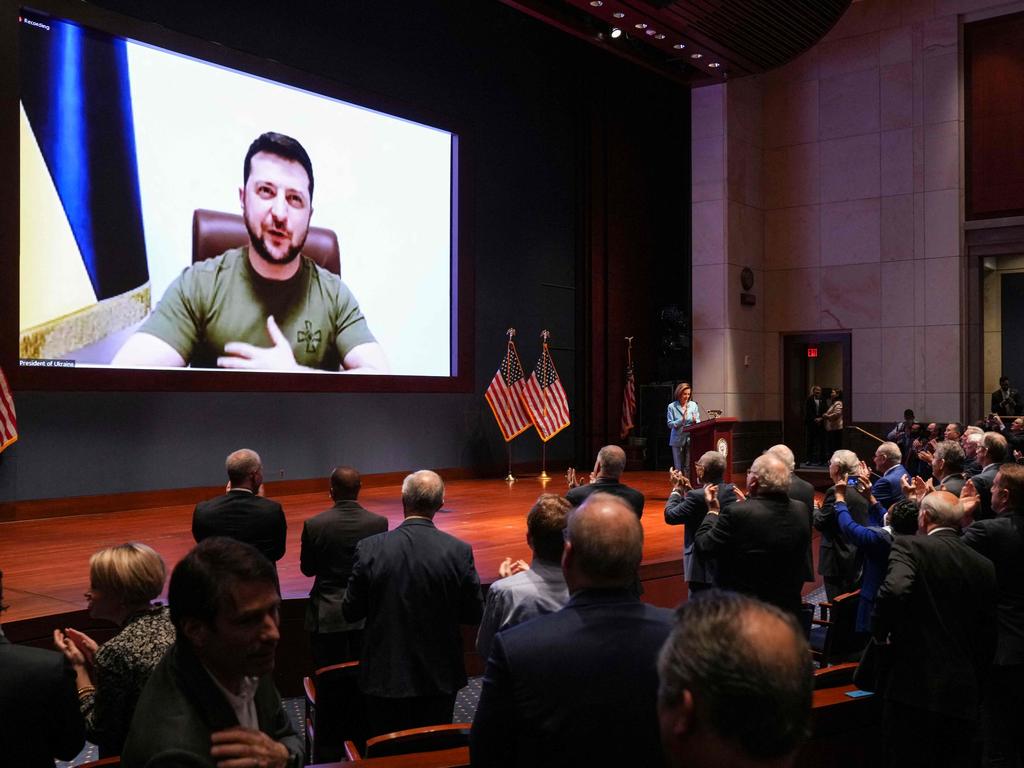


To join the conversation, please log in. Don't have an account? Register
Join the conversation, you are commenting as Logout